
Posts Tagged: cat
Observing International 'Cat Day
Today (Aug. 8) is International Cat Day, the feline kind. It was created in 2002 by the...

Monarch caterpillar on milkweed in a Vacaville garden. (Photo by Kathy Keatley Garvey)

A cat, Xena the Warrior Princess looks intently at what was once a 'cat, a monarch caterpillar. All she did was look. (Photo by Kathy Keatley Garvey)
Bring on the Changoes
Article out of this morning's Wall Street Journal. Apparently American consumers are going wild over knobbled carrots, weird apples and mis-shapen potatoes.
Consumers, we have a deal for you! Catfaced strawberry fruit and poorly pollinated blackberries we can deliver by the pallet. Step right up!
Seriously, this is something pretty intriguing.

Seems like this little gem might be worth a lot more than we all think.
It's All the Buzz: 4-H'ers Learning How to Keep Bees
Nathaniel Haddon of the Vaca Valley 4-H Club, Vacaville, is only nine years old, but he already...
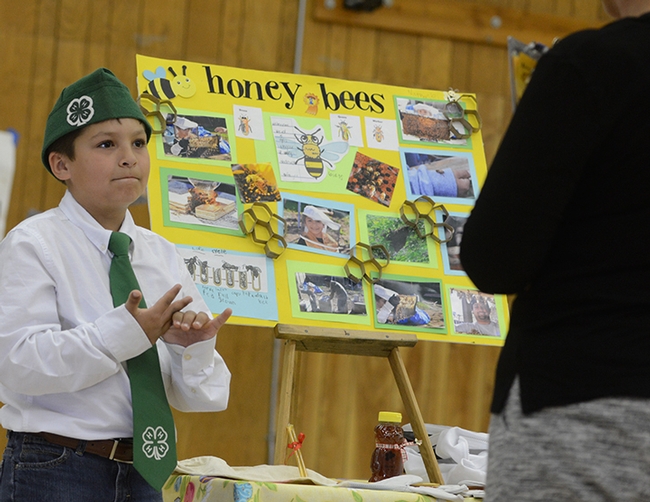
Nathaniel Haddon, 9, of the Vaca Valley 4-H Club, Vacaville, discusses bees at the Solano County 4-H Presentation Day. (Photo by Kathy Keatley Garvey)
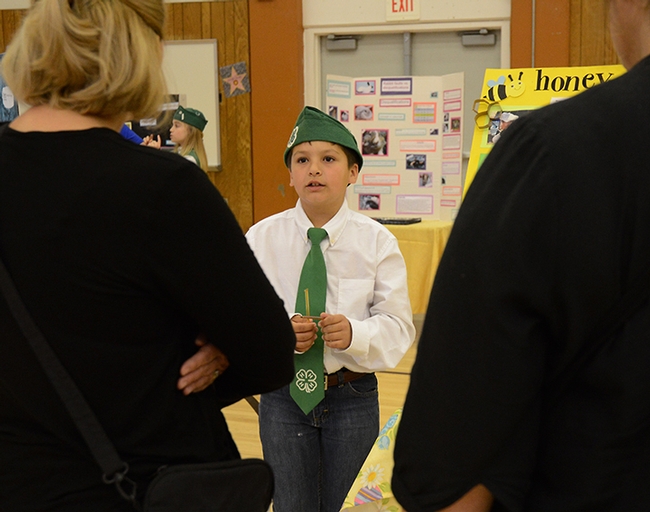
Beekeeper Nathaniel Haddon fielding questions about bees. (Photo by Kathy Keatley Garvey)

Solano County 4-H Presentation Day evaluators Brenda Torres (left) and Cara Kent listen attentively. (Photo by Kathy Keatley Garvey)
Rest in Peace, Pollinator Partner
We lost our Pollinator Partner today. Xena the Warrior Princess, a 16-year-old tuxedo cat that we...
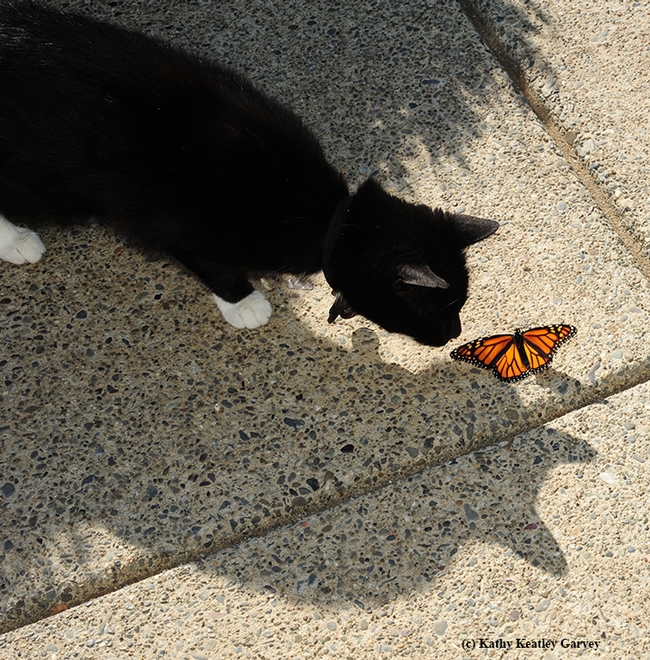
Xena the Warrior Princess checks out a monarch butterfly. (Photo by Kathy Keatley Garvey)
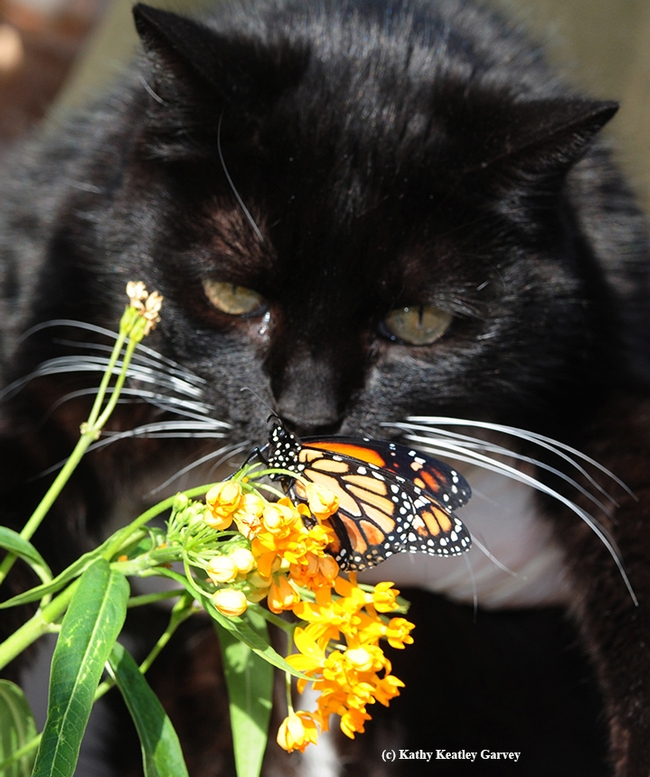
"Pollinator Partner" Xena the Warrior Princess looking at a monarch butterfly. (Photo by Kathy Keatley Garvey)
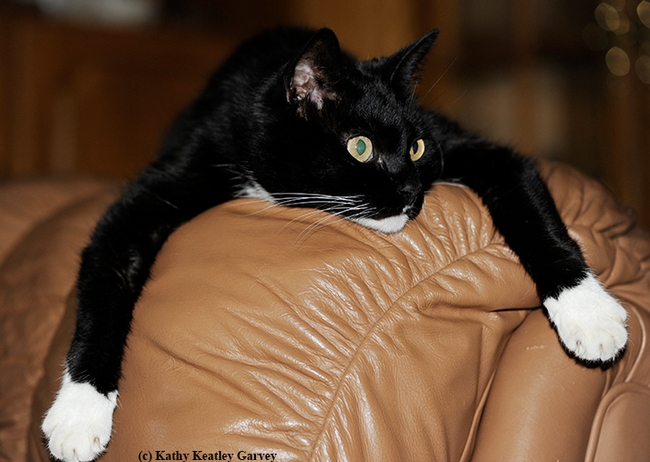
Exhausted after a day in the sun, Xena the Warrior Princess sprawls atop a chair. (Photo by Kathy Keatley Garvey)
Accidental dog poisoning on the rise
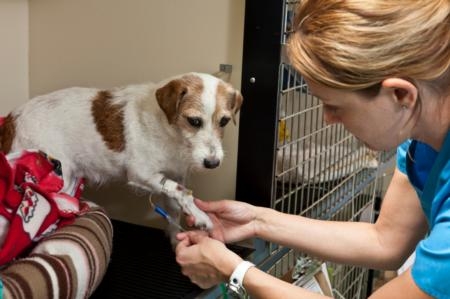
Veterinarians at the University of California, Davis, warn pet owners to be careful about using rat poisons and similar compounds.
In recent weeks, veterinarians at the UC Davis William R. Pritchard Veterinary Medical Teaching Hospital have seen a spike in accidental rodenticide poisonings. In the last two weeks of August alone, they diagnosed and treated six canine cases.
If not treated, a dog can die within a week of ingesting rodenticides.
"This is an all-too-common occurrence," said Karl Jandrey, assistant professor of clinical small animal emergency and intensive care at UC Davis. "People are trying to get rid of unwanted rodents, but are not realizing what these toxins do to the other animals who share that environment."
Keeping pets safe
Using proper pest control techniques can help keep family pets safe, said Roger Baldwin, UC Cooperative Extension advisor with the UC Integrated Pest Management Program. Baldwin, a wildlife pest management expert, is based at the UC Kearney Agricultural Research and Extension Center in Parlier.
Dogs can be affected by rodenticides two ways: by eating the poisoned bait or by eating an animal that was poisoned. Both can have serious consequences.
Home improvement stores like Lowes and Home Depot, and even grocery stores, carry a variety of products that may be used to control unwanted rats, mice, pocket gophers and ground squirrels. If the unwanted animals are inside the house, Baldwin recommends using traps rather than poison.
"If a poisoned animal dies behind a wall, you can't get it out and you have to live with the smell for weeks or months," Baldwin said.
Also, before baiting outdoor pests, Baldwin suggests making sure they are not also going inside buildings. If they are, find all potential access points and close them up.
If resorting to poison baits, buy a new product at the store and carefully read the label to understand when, where and how it can be used. Because of rapidly changing restrictions in recent years, old products in your garage or shed could be outdated.
Pocket gopher bait must be placed in the gopher's underground burrow. Even there, Baldwin said, certain dogs will dig up dead pocket gophers if they are close enough to the surface. Families with digging dogs will likely want to choose gopher traps. For ground squirrels, baits can be placed in bait stations or scattered very thinly on the ground through broadcast or spot treatments.
"When you use broadcast or spot treatments, there is relatively little danger to dogs or cats," Baldwin said. "But I would opt to use bait stations in my yard if I had pets running around, just to be on the safe side."
Some rodenticides contain ingredients that are anticoagulants, which slow the clotting of the blood. When dogs ingest these poisons, the active ingredients concentrate in the liver where they interfere with vitamin K storage and the production of blood clotting factors.
At UC Davis' veterinary teaching hospital, dealing with accidental poisoning by an anticoagulant rodenticide can require around-the-clock care with treatments in the intensive care unit to replenish blood clotting factors with fresh frozen plasma and replace vitamin K. If administered early enough, this treatment usually leads to a full recovery. Other rodenticides (e.g., bromethalin, cholecalciferol, strychnine and zinc phosphide) do not have antidotes, so treatment is more difficult.
One patient recently treated at UC Davis was Mocha, a one-year-old Belgian Malinois from Winters, Calif. Mocha had gotten into d-CON, a common rodenticide available at hardware stores.
Luckily, Mocha was brought to the veterinary teaching hospital in time. She responded well to treatment and was able to go home in two days.
"We are grateful for the care Mocha received at UC Davis," said Ken Shaw, Mocha's owner. "Like most dogs, Mocha is adventurous and likes to get into things she shouldn't. But after the treatment at UC Davis, she was home within a few days, happy and playful once again."
